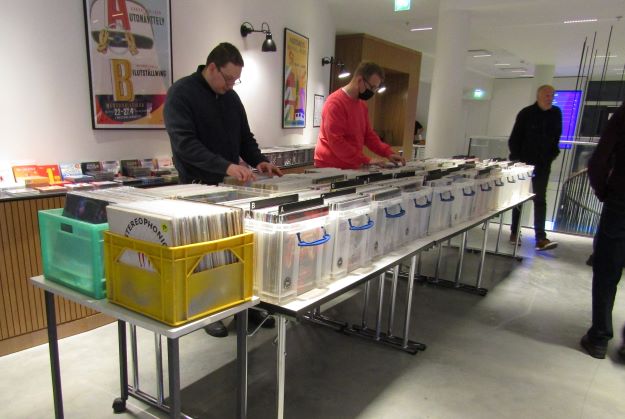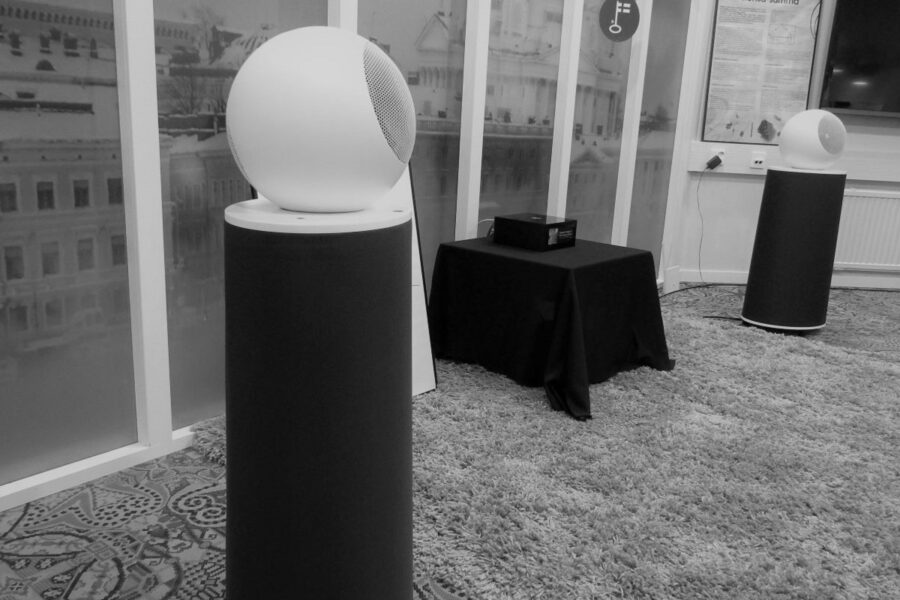There was one in Paris the other week, another in Britain, one in the Netherlands. Smaller ones in Sweden. Et cetera. Many still being cancelled or postponed, some gone forever, Hi-Fi exhibitions open up their doors slowly but surely, some locally, other nationwide. Among the latter there’s Helsinki HIFI2021 that was held 30-31 October side by side the year’s most important Book Exhibition. The number of visitors wasn’t on the level of 2019 but not bad either, and appeared to be happy to be able to breathe again.
Novelties
Thw self-righteous show-stopper this time was Gradient Lab’s new Revolution loudspeaker, or rather the fifth incarnation of the old Gradient Revolution, now titled R5-A. It is well known that Jorma Salmi experimented with a ball top for his Revolution speaker already in the early 90s but declined the idea for reasons of impracticality. However, a few years ago, Salmi revisited the idea in the new 1-series speaker, the 1.4, and now the very same cardioid ball with the latest SEAS coaxial driver tops the new active R5-A Revolution, with an active crossover and amplification. Otherwise, the basic concept of the original is still there. The most eye-catching new feature is the outlooks: in addition to the new ball top, the woofer section is also now roundish and cylinder-like widening downwards. Also, the color options are different now.
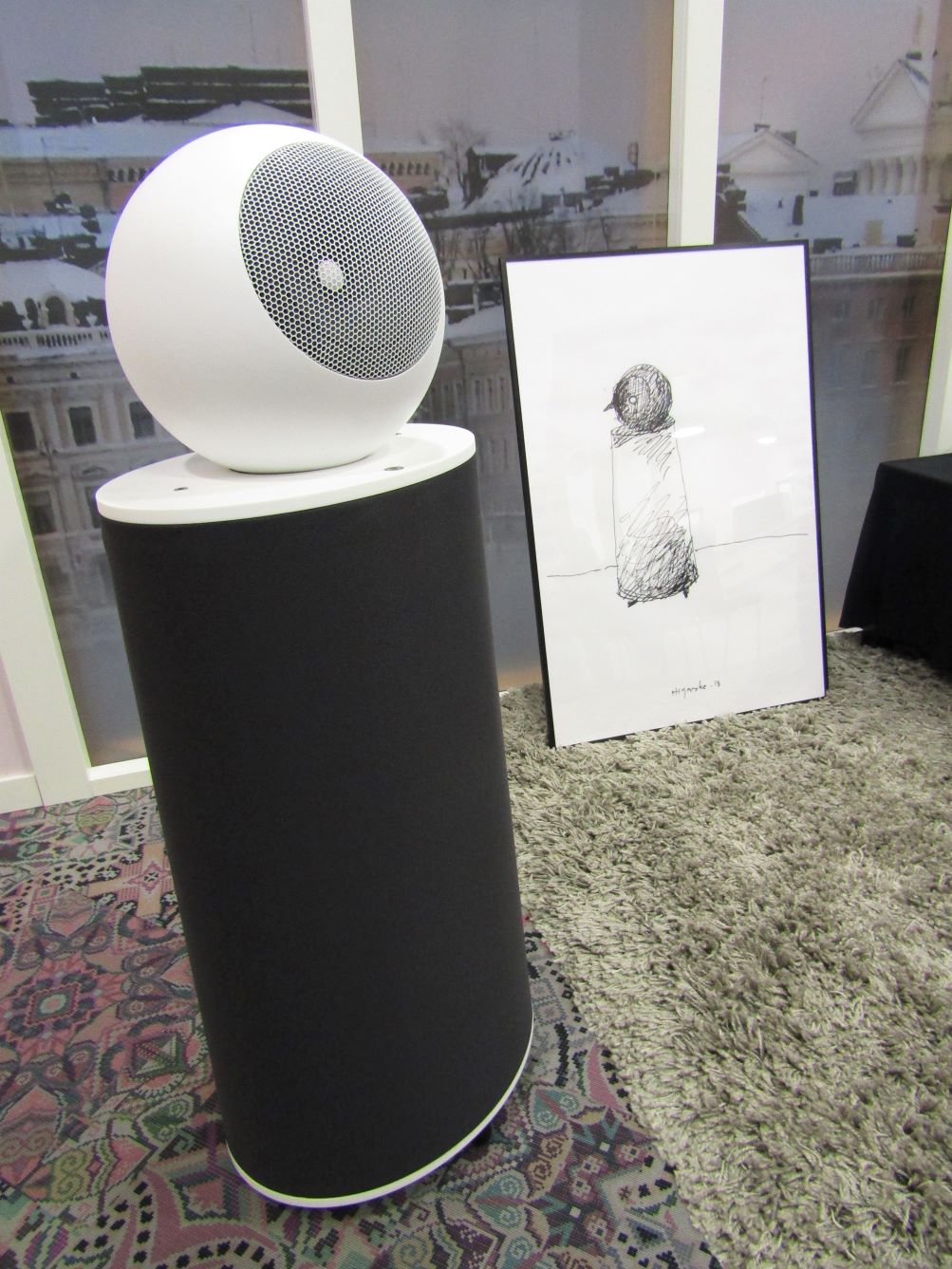
The bass part consists, as before, of two 12″ (300 mm) long-throw woofers assembled on an open baffle giving the low frequencies a “figure eight” or dipole radiation pattern, operating from 20Hz up to 200Hz. Thanks to the solution undesirable standing waves can only be born in the direction of the speaker’s radiation pattern, and the woofer section can be rotated and directed to minimize the rest. The latest coaxial driver features a 176mm pre-coated reed paper cone reproducing frequencies between 200 Hz and 2.5 kHz, and from 2.5kHz to over 20kHz there’s a 25mm Al/Mg-dome placed at the apex of the midrange cone, generating an ideal point source with an excellent phase and amplitude response. The coaxial element is mounted in a spherical resistance enclosure: the leaking sound from the opening behind the cardioid spherical enclosure damps the rear radiation to effective null. Frequency response: 20-20000Hz +/-2dB, impedance 6 Ohm (min 5 Ohm), sensitivity 88dB/2.83V/1m. prevents early reflections from the surfaces behind the loudspeaker
The entirely box-less sound was first-rate as before, the bass crawling down to the lowest octave but a true cherry on top of a cake was how the bass reproduced, so purely and free from any artificial warmth to the extent that it may first feel embarrassing until the listener realizes this is in fact the way to go in the ideal world.
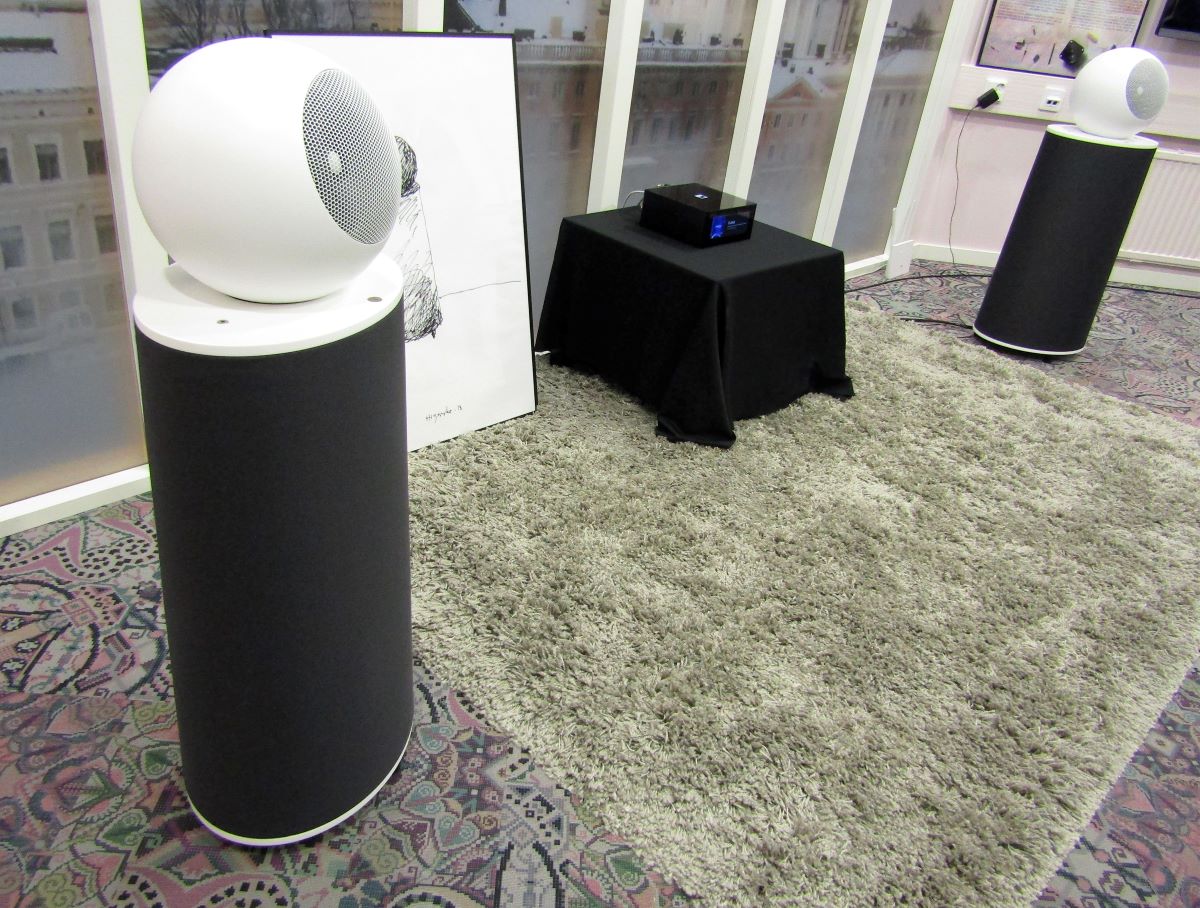
Another relatively new Finnish speaker is Taipuu Speakers’ Kero, an uncompromising, hand-crafted tripod 2-way, made to compete with the world’s best tripod speakers. Unexceptionally thoroughly studied and measured, the speaker features 15 liters of internal volume, a 6.5 inch long-stroke low-distortion woofer by the Danish Purifi assisted by the same Purifi 6.5 inch woofer used as a passive radiator on both sides of the cabinet. Anything beyond 2370 Hz is handed over to a 1″ aluminum dome with a diffuser. The 4 Ohm, 85.5 dB sensitivity speaker covers frequencies from 30Hz to 30kHz (-10dB). The sound? The sound was universally valid. Very hard to point the finger at any individual imperfection. At 7600 euros per pair the speaker is not cheap but still has a remarkable performance/euro ratio.
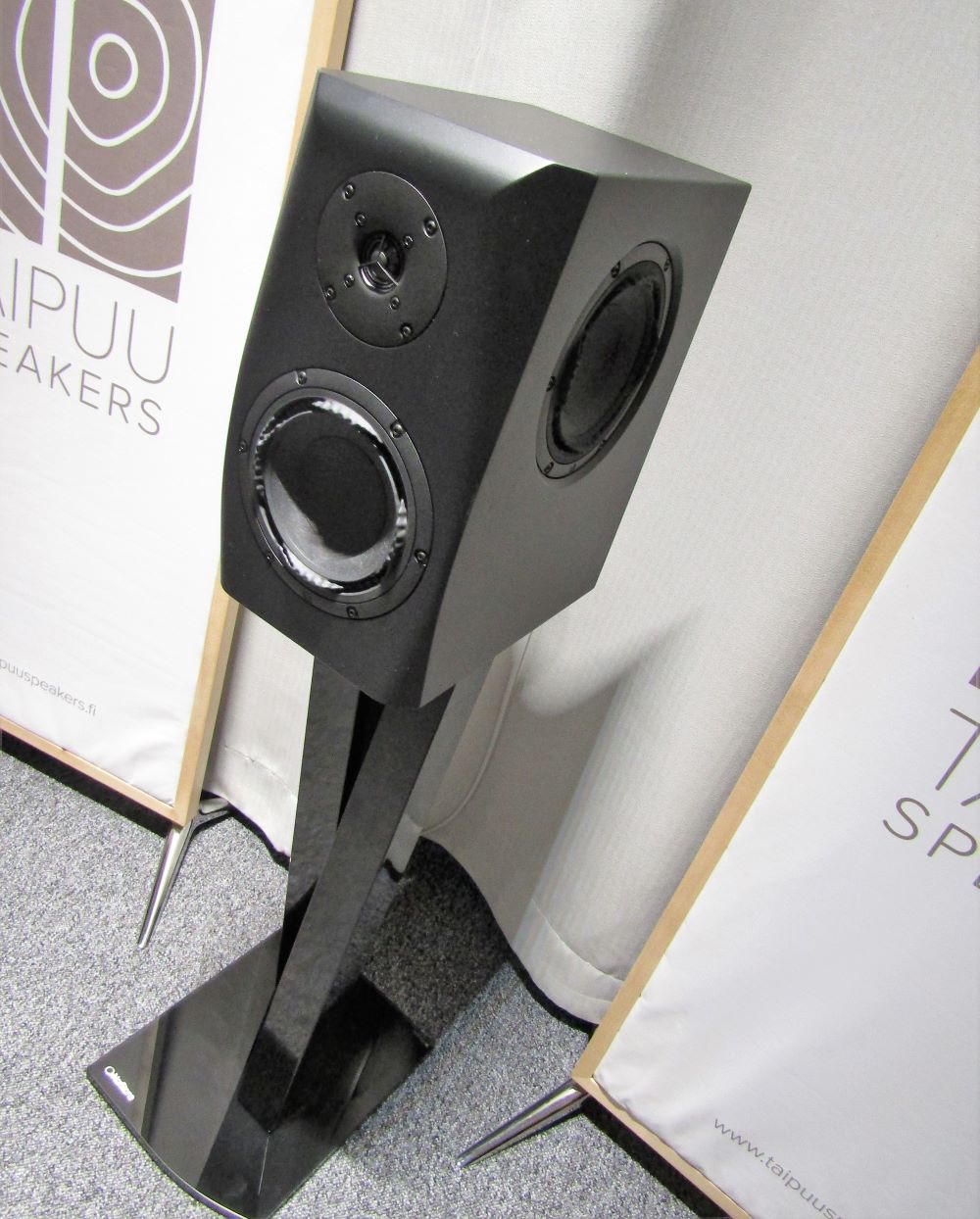
Kannel Audio’s Magnetar is a brand new ribbon speaker, a concept that obviously attracts Finnish loudspeaker designers. The open back line source features a low-impedance ribbon element made of 13 micron thick aluminum, in a shallow wave guide of 22.4 cm width. The impedance and voltage/current transformer is an amplifier friendly high quality autoformer. The neodymium magnets are hidden inside the shaped aluminum profile. The bass part is a U-frame dipole with a 15” dynamic woofer, and the passive X-over filter crossing electro-acoustically at 385 Hz (-6dB point 35 Hz). Behind there’s a super-tweeter for frequencies above 10 kHz. Each of the three channels can be adjusted. The sound was honest and well balanced, no sign of lightness or weakness that often go with this type of designs. The fully dipole speaker naturally favours airy acoustic music but the real treat was how well the speaker survived the pop/rock department.
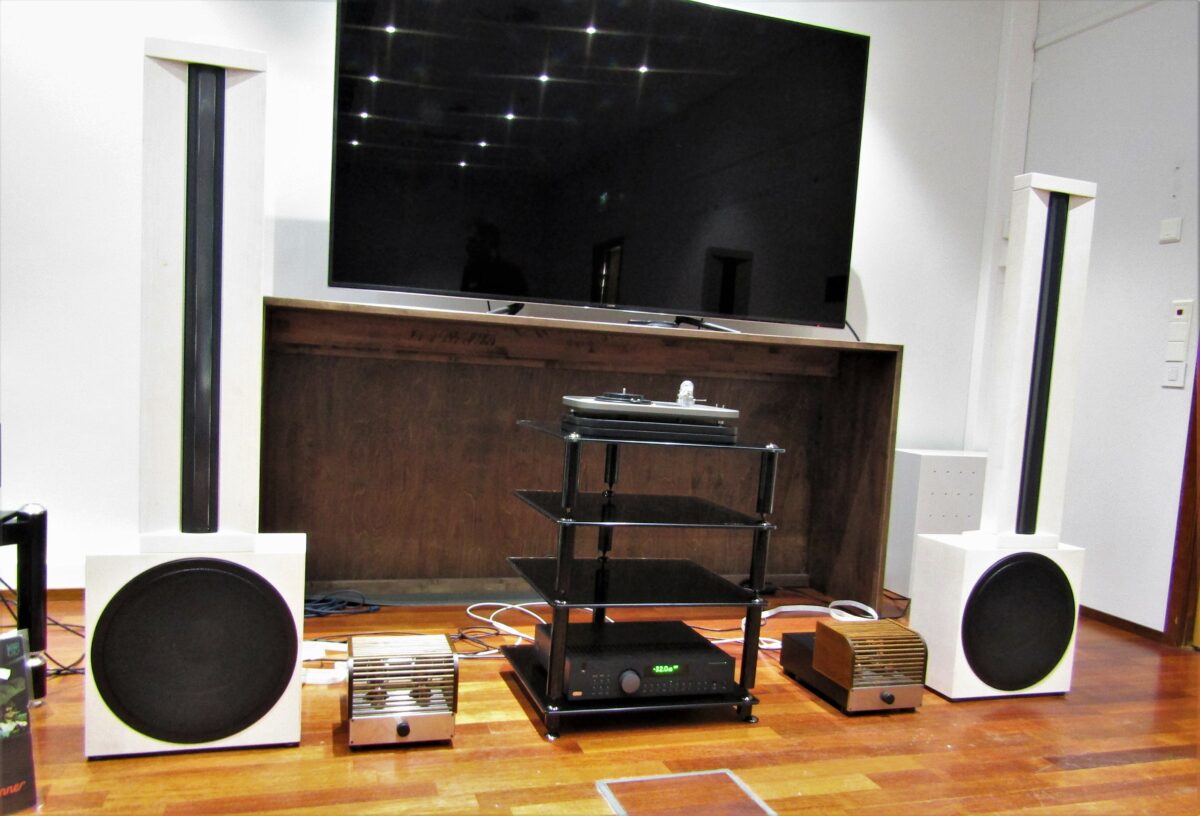
The amp was self-made tube mono blocks (not yet connected in the image) were self-made, and the source eventually either Thales’ c. 15 000€ package Slim D: TTT-Slim II + Thales Simplicity II tonearm + EMT JSD 6 cart, or …
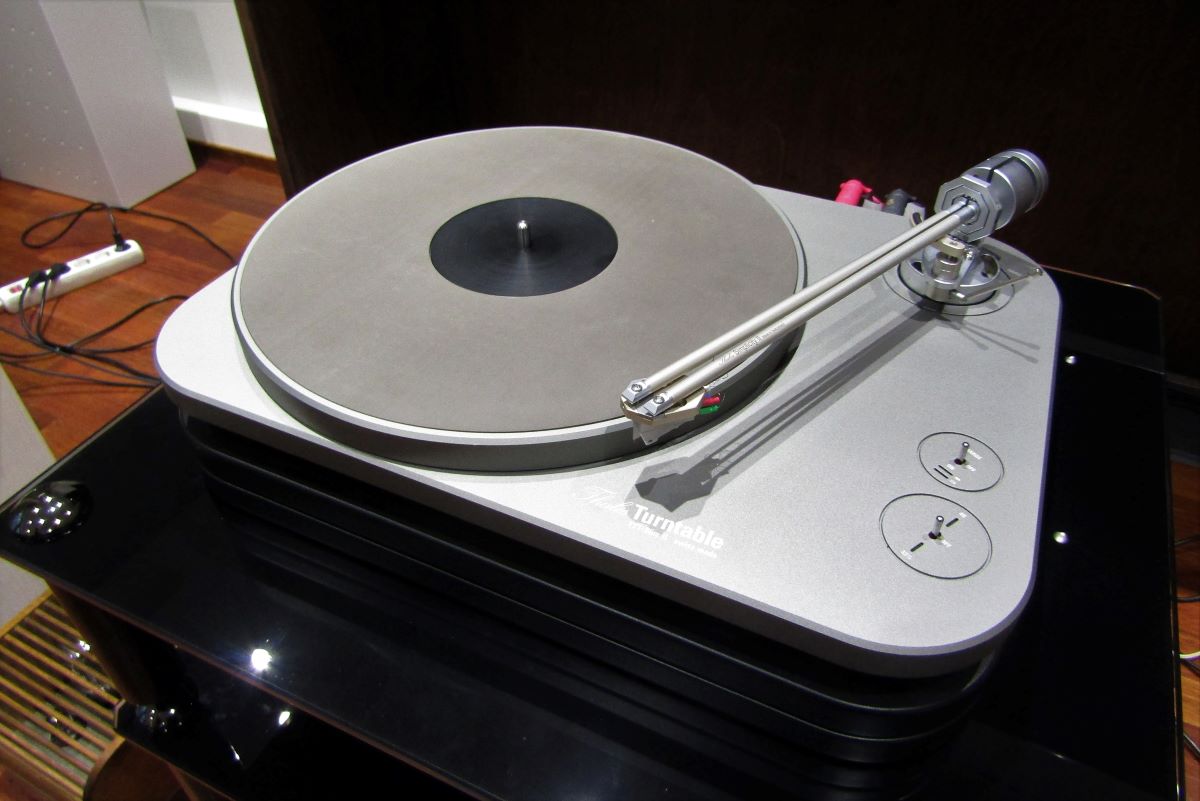
… perhaps the coolest turntable at the Show: EMT 938 modified to have in-built MC stepups instead of the original transistors. And even more exciting was that the cartridge was EMT’s oven fresh TSD Novel!
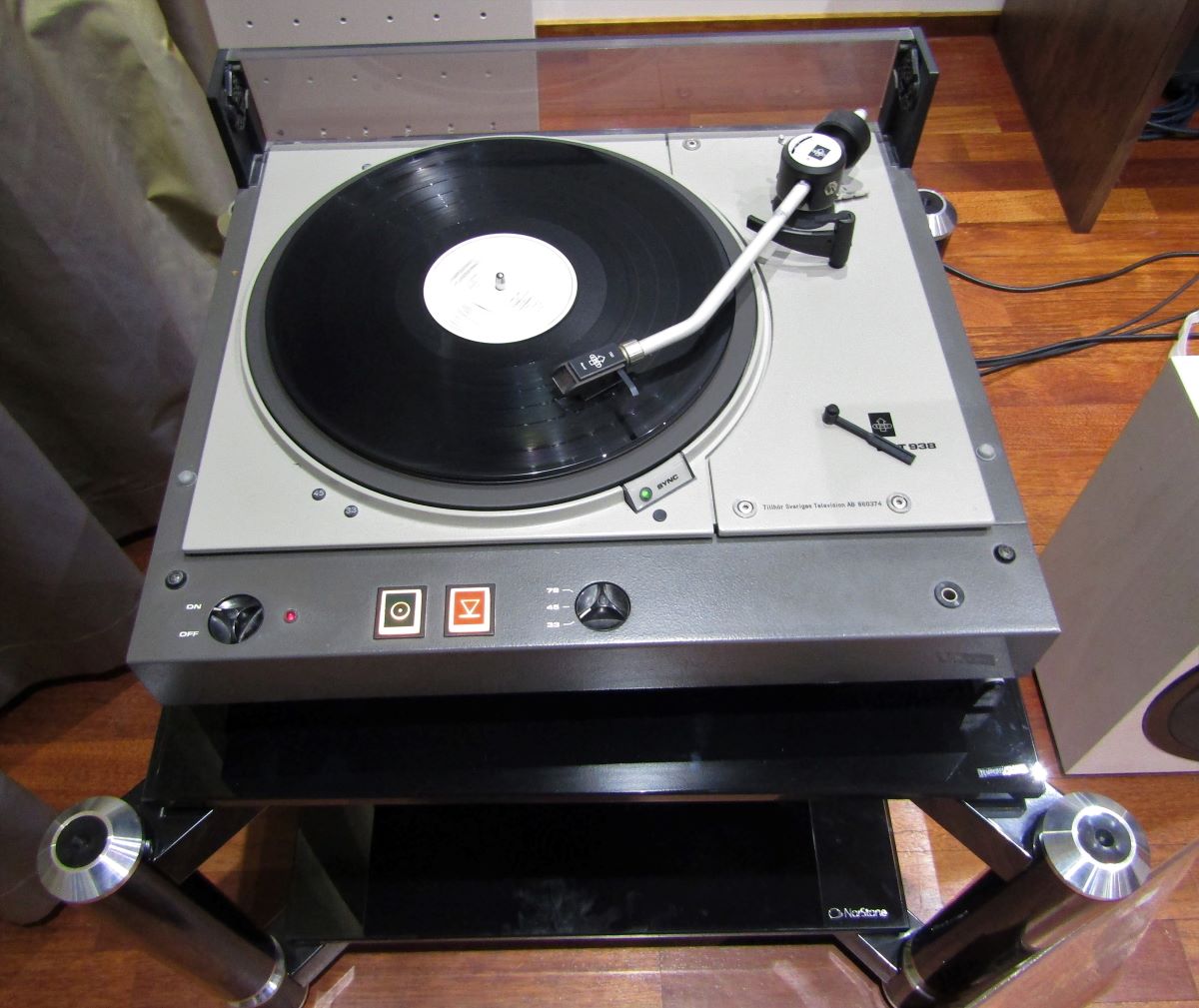
First appearance in Finland
This was fun! The same McIntosh amplification but two different speakers (and the subs?). The first was McIntosh XR100, likely the first McIntosh loudspeaker ever present at a Finnish audio fair. The sound was fine but it had to face tough competition by …
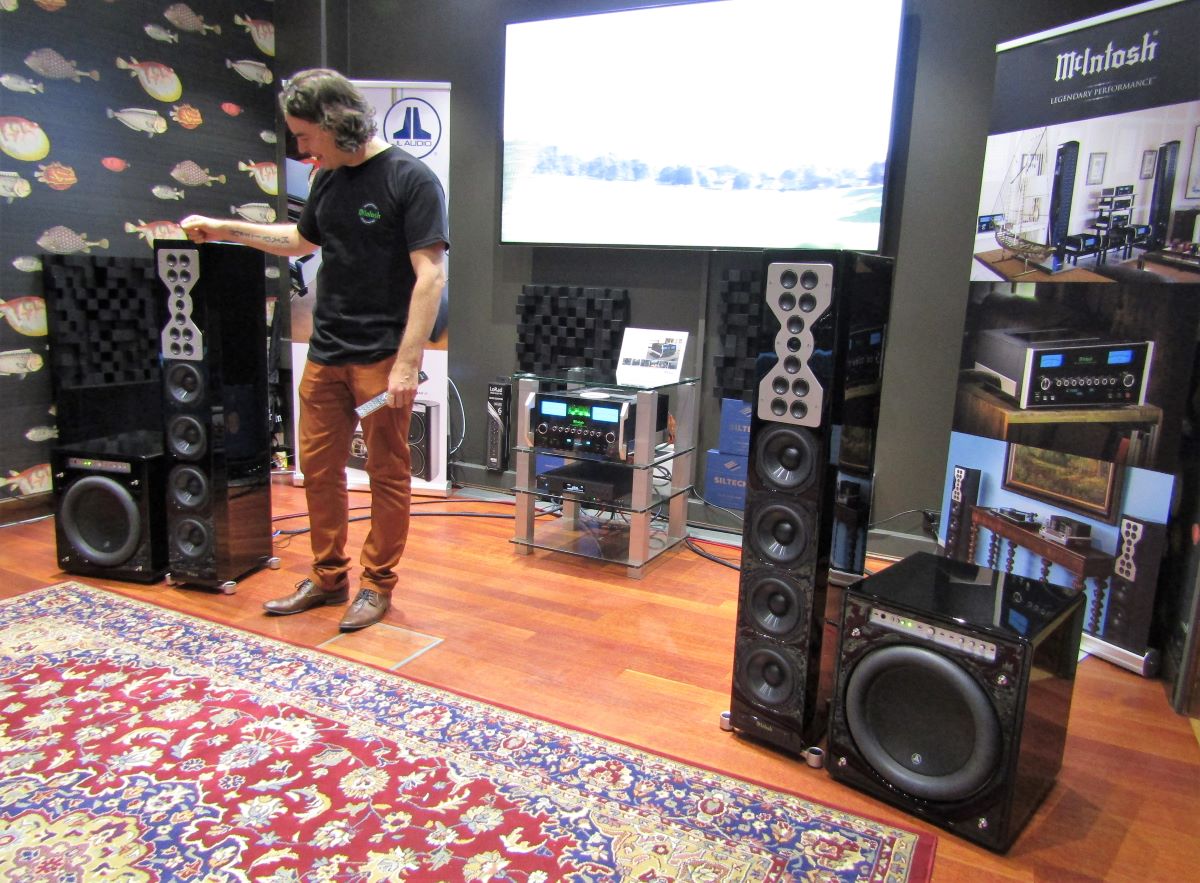
… German Physics’ omni tower, also making its first appearance in Finland, and whose DDD driver on top handling beautifully everything above 200 Hz. An elegant, consistent, and relaxing sound, and despite the operational principle, spatially legible. The sound that made sense, and even touched the heart.
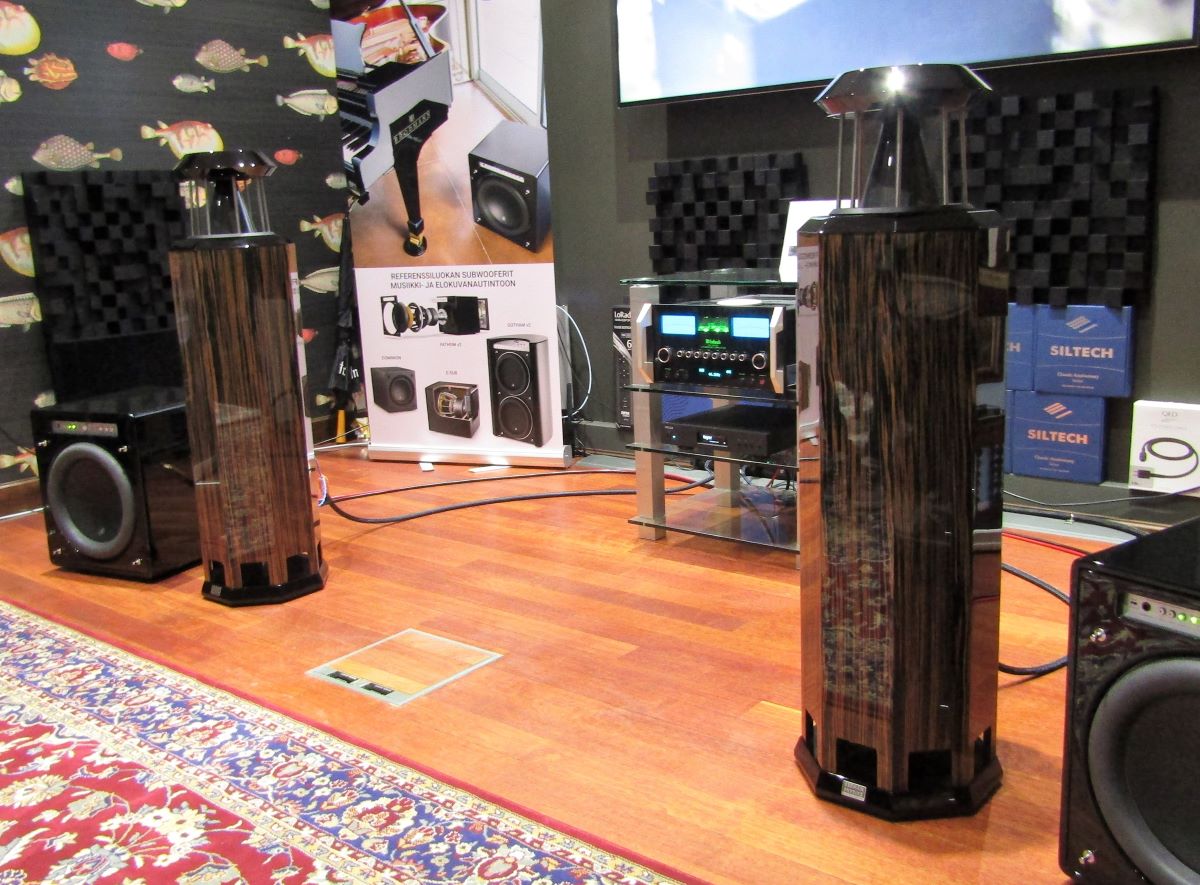
As for the signal, all that was needed was Melco’s N1 media player, and McIntosh MA 12000 integrated amplifier.
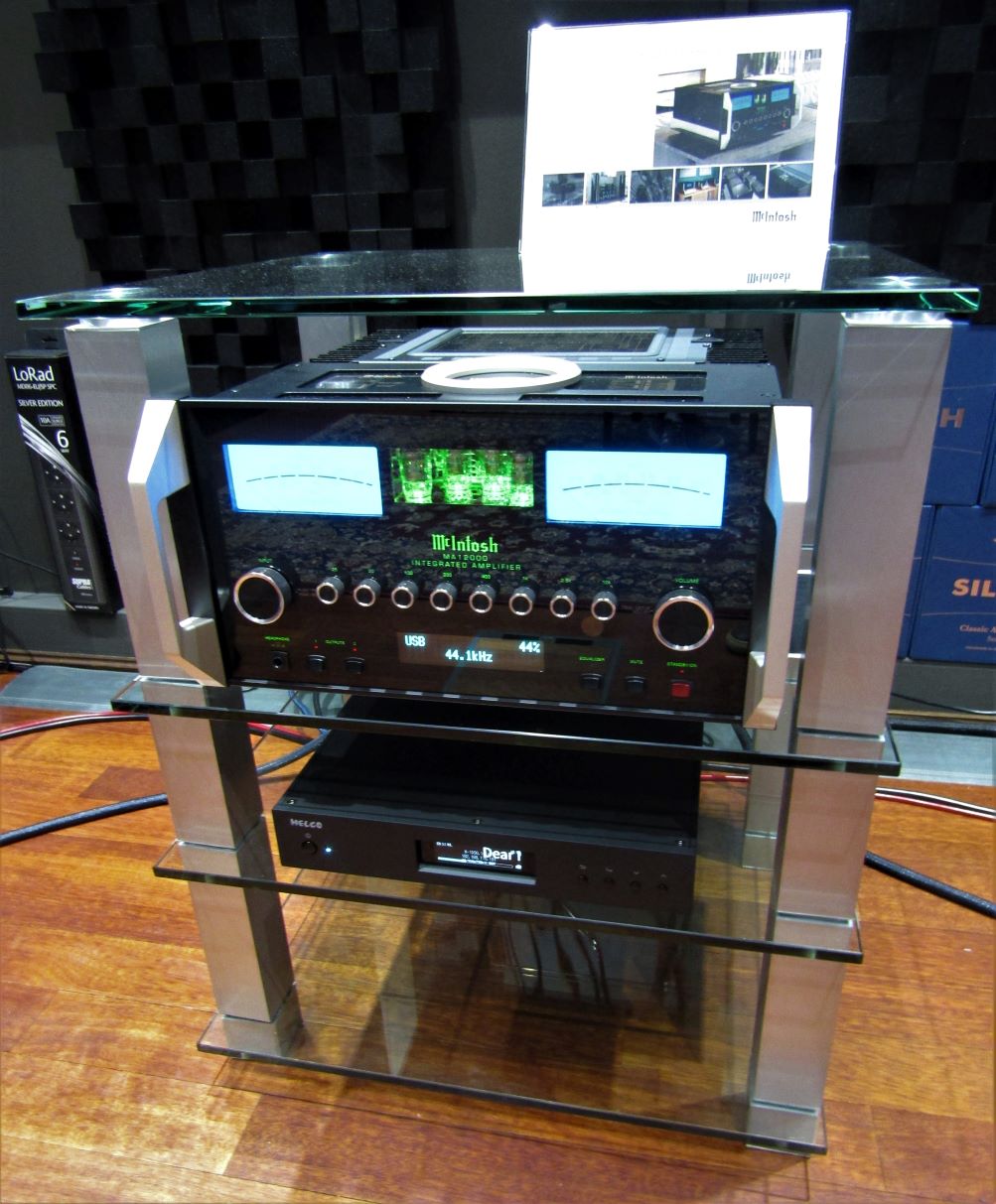
Yet another Finnish debut! GGNTKT Model m1 active speaker, upgraded to have a more muscular power supply (57,600 μF of low-ESR capacitors). The sound had many good qualities, and lacked really bad ones.
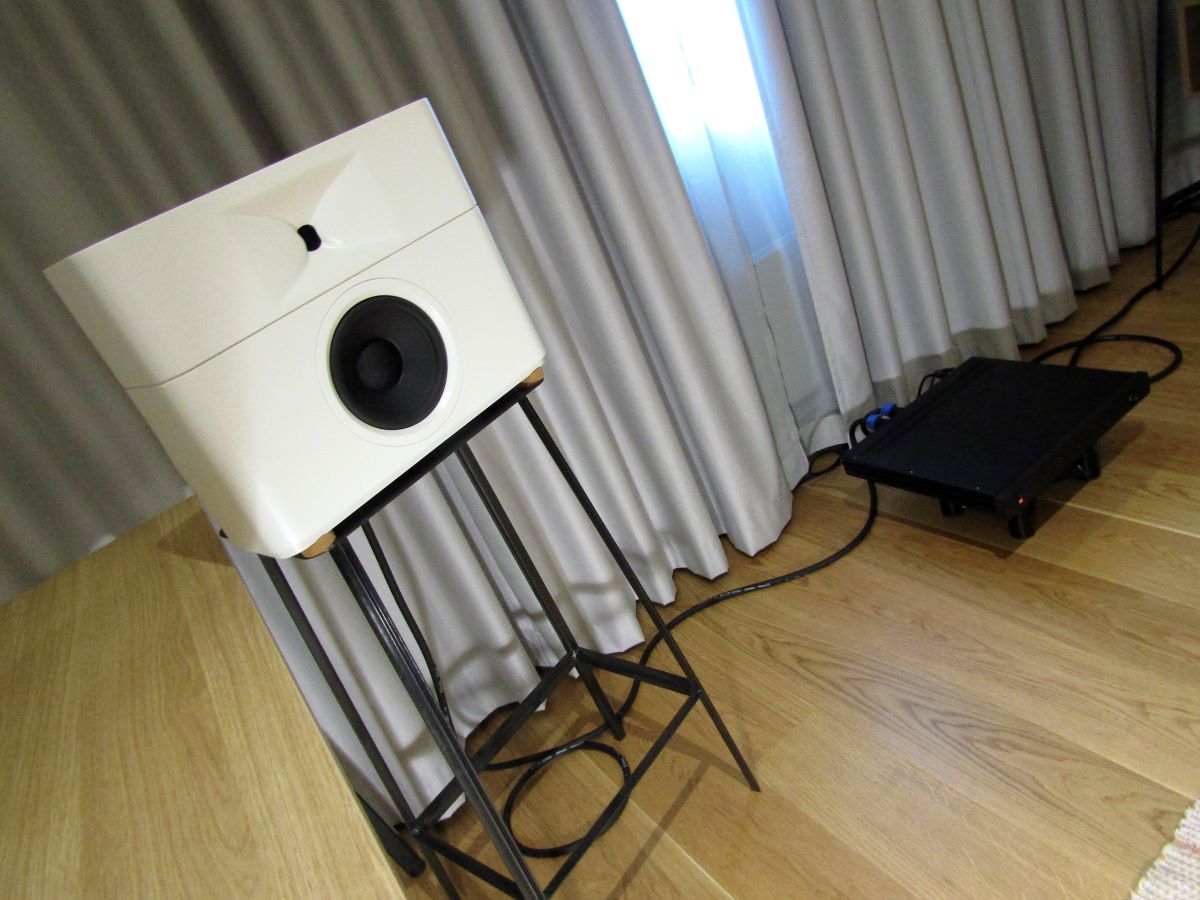
Grands
Sonus faber’s majestic IL cremonese ex3me offered, with McIntosh’s help, relaxing musical moments with authority but not forcibly.
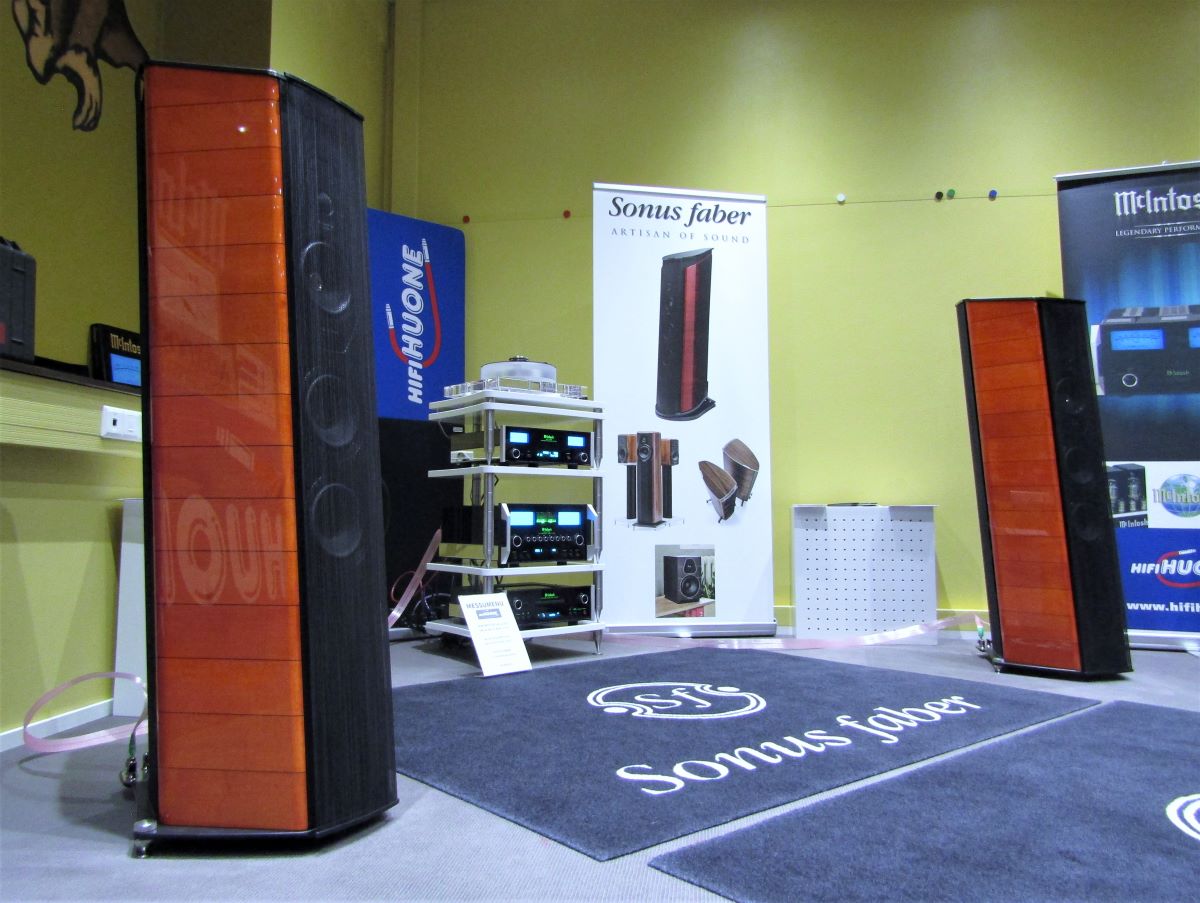
The new B&W 801 D4! The best what B&W can currently offer. With the top-end Classe amplification, a very solid performance, technically masterful.
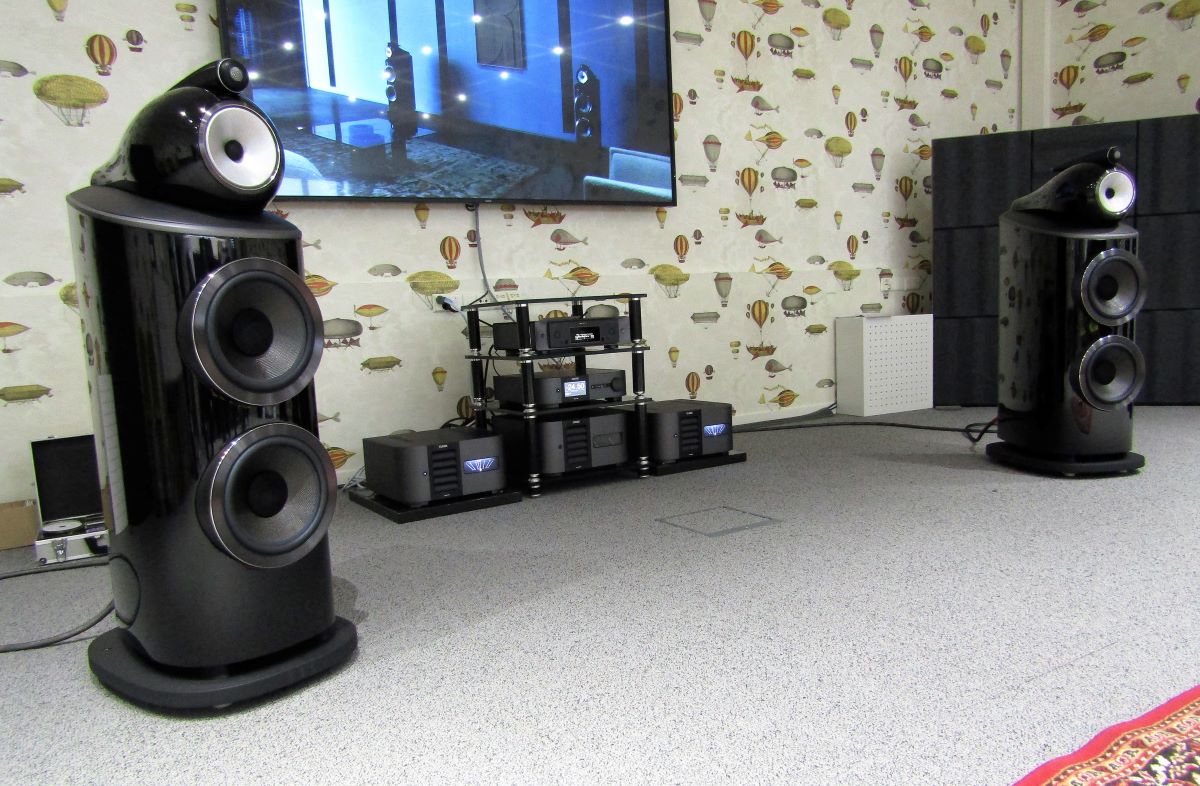
This simple stereo setup is the Steinway & Sons Model O, consisting of an AMT ribbon tweeter, a specially designed 6” aluminum midrange driver with a very large magnet, paired with an 8” passive unit to provide an impactful bass. It remained a bit of mystery to what degree room correction was applied but the sound was big and relatively uncolored.
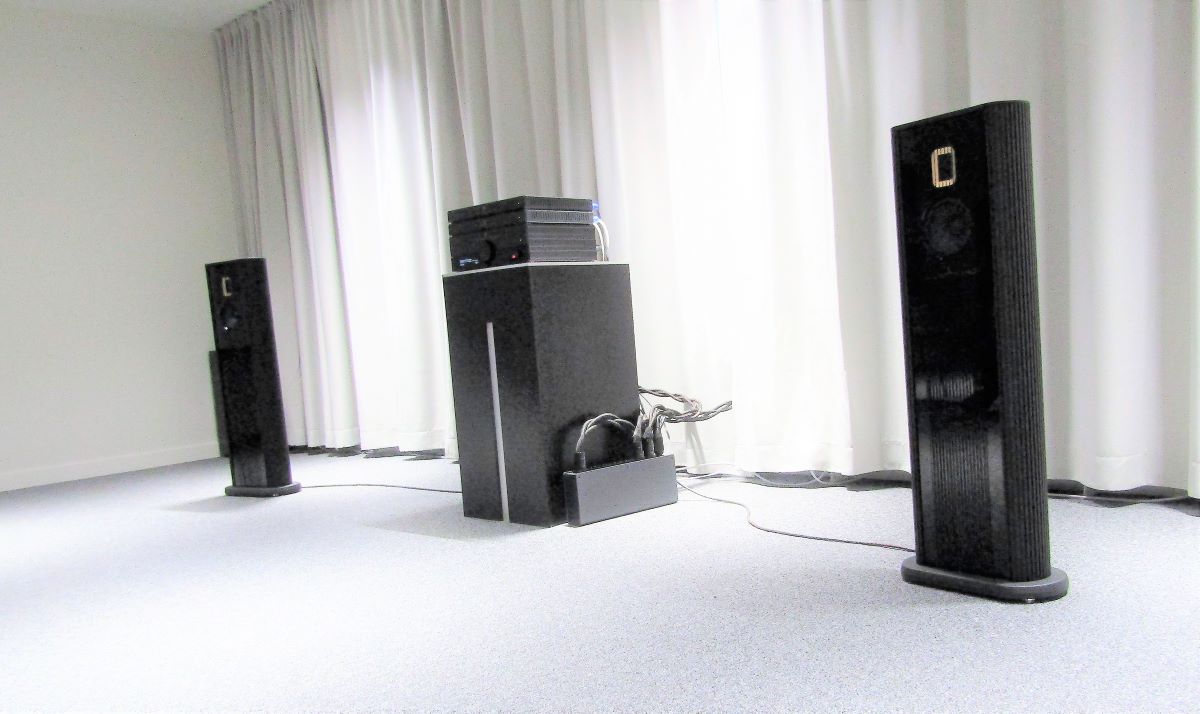
Another wide stereo angle system: Dynaudio Confidence 20 and all Cambridge Audio amplification.
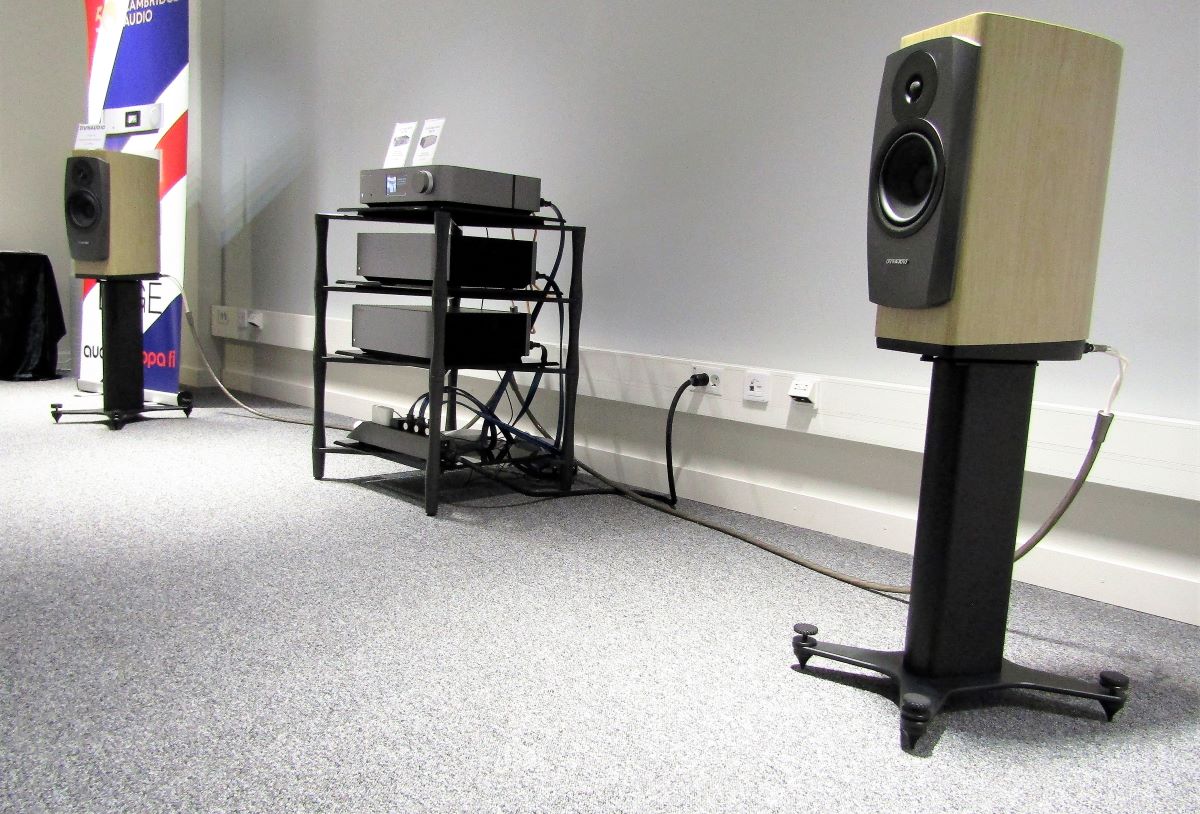
Larsen 9 loudspeaker can benefit from a stereo triangle but is not dependent on it. The amp was Moonriver’s reference model, and the main source Pear audio’s ODAR turntable with Pear audio Traces MC-cartridge.
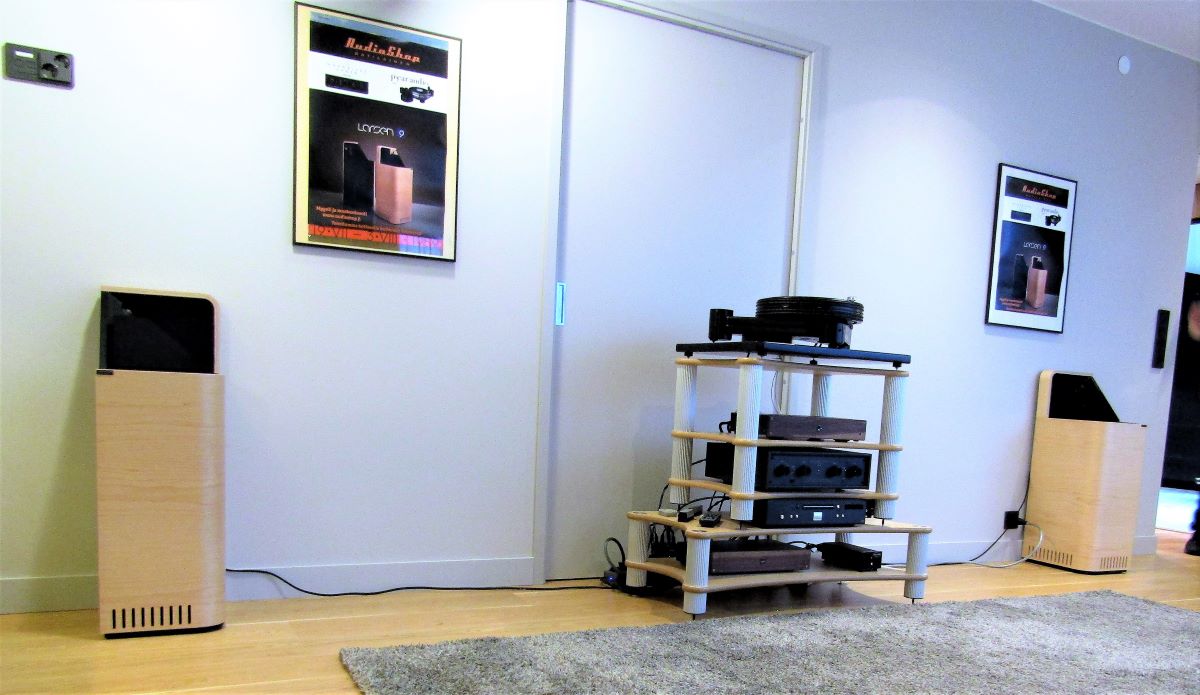
Classics
These three systems represented more classic style. The first one featured Harbeth Super HL 5 + XD loudspeakers and the latest Exposure electronics.
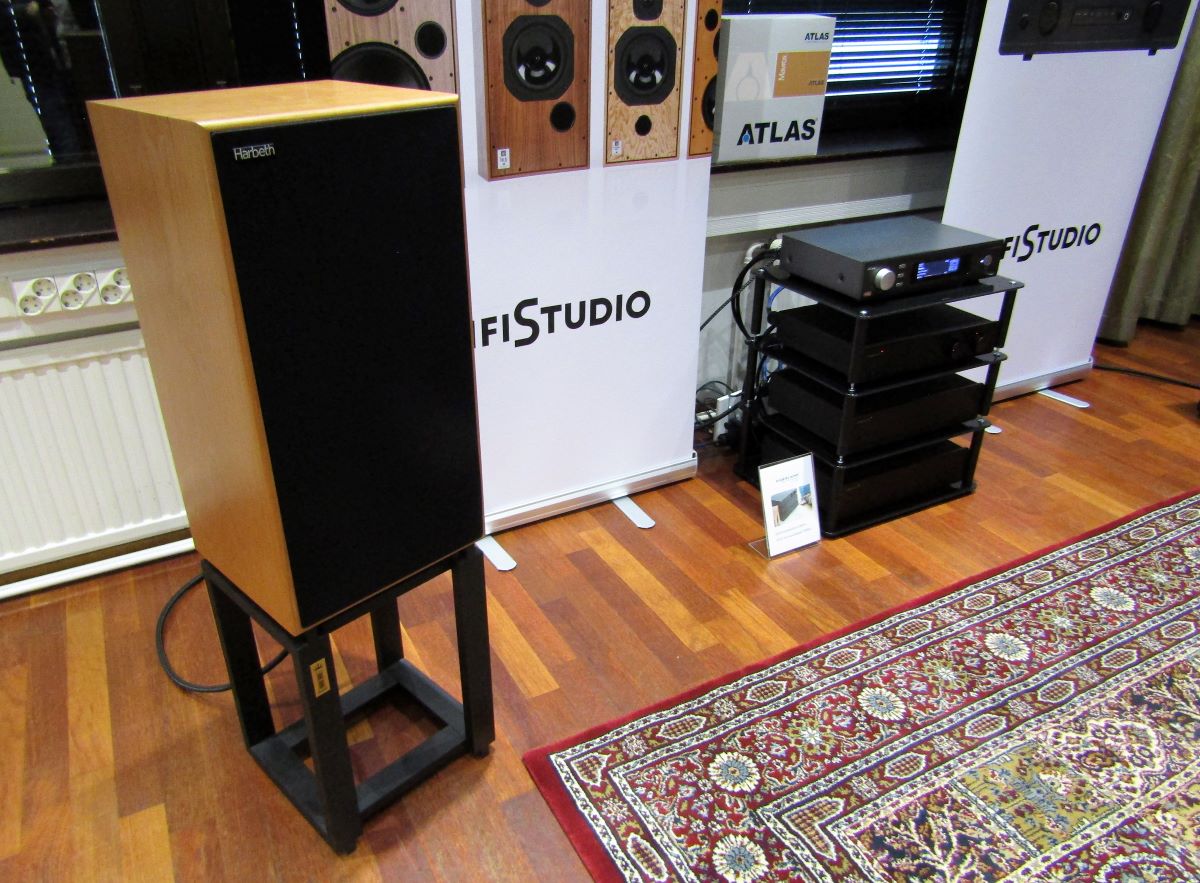
The second was Leak’s retro-electronics doing their marvels to Wharfedale Linton speaker with not that much money.
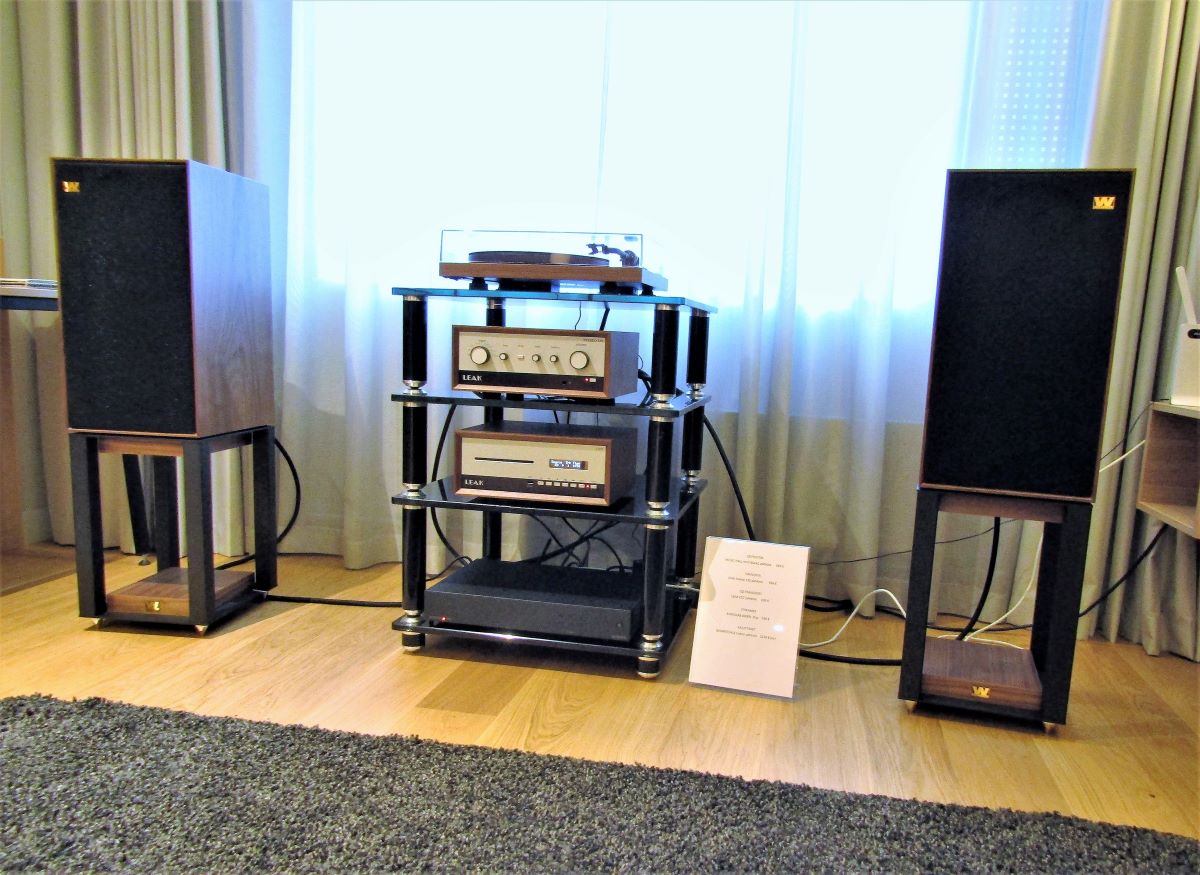
Classic Audio Shop had nothing but real vintage stuff such as the Sansui speakers in the front line, first generation Revox and Marantz CD players (was in fact the same CD as the first Philips CD) and so on.
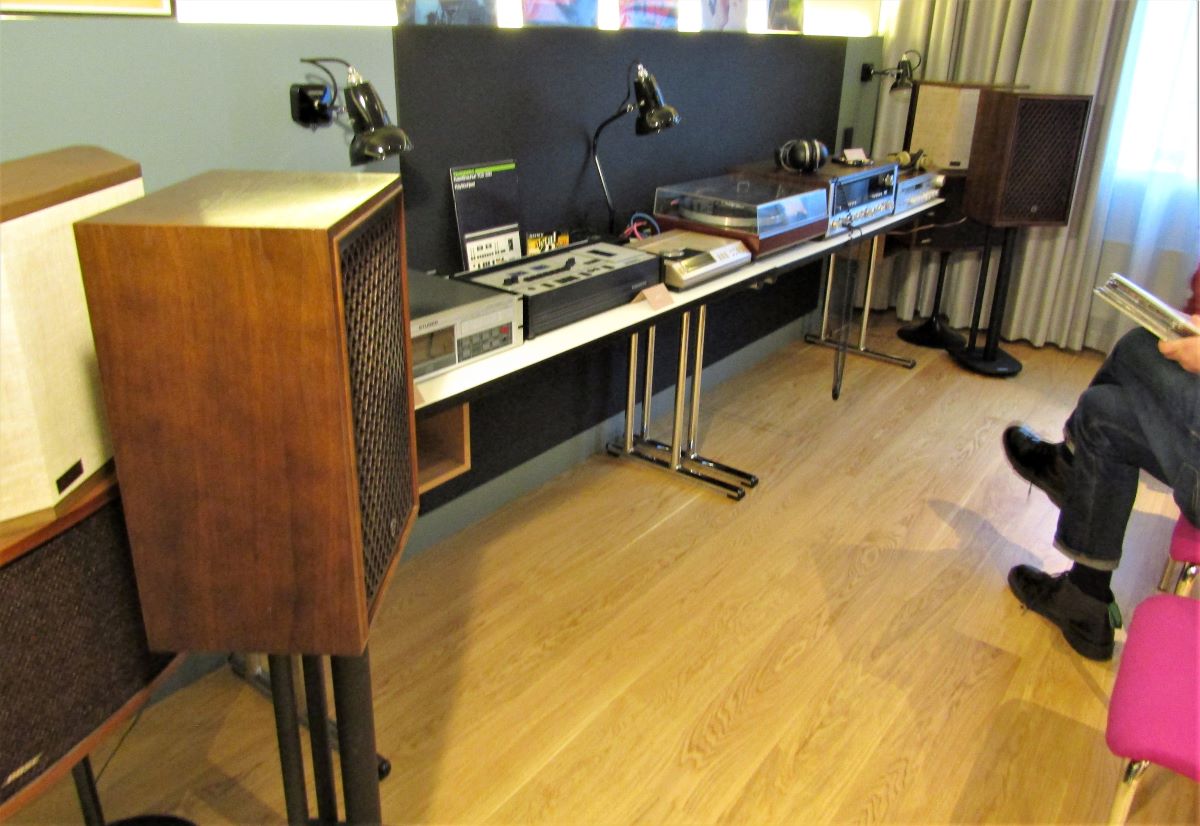
More intimate
Hifiklinikka’s choice for the speakers was this time the French Diptyque Audio DP 107 magnetostatic speaker with a high resolution and open sound. Cables from the Japanese Tiglon and Arya Audio’s vibration killers.
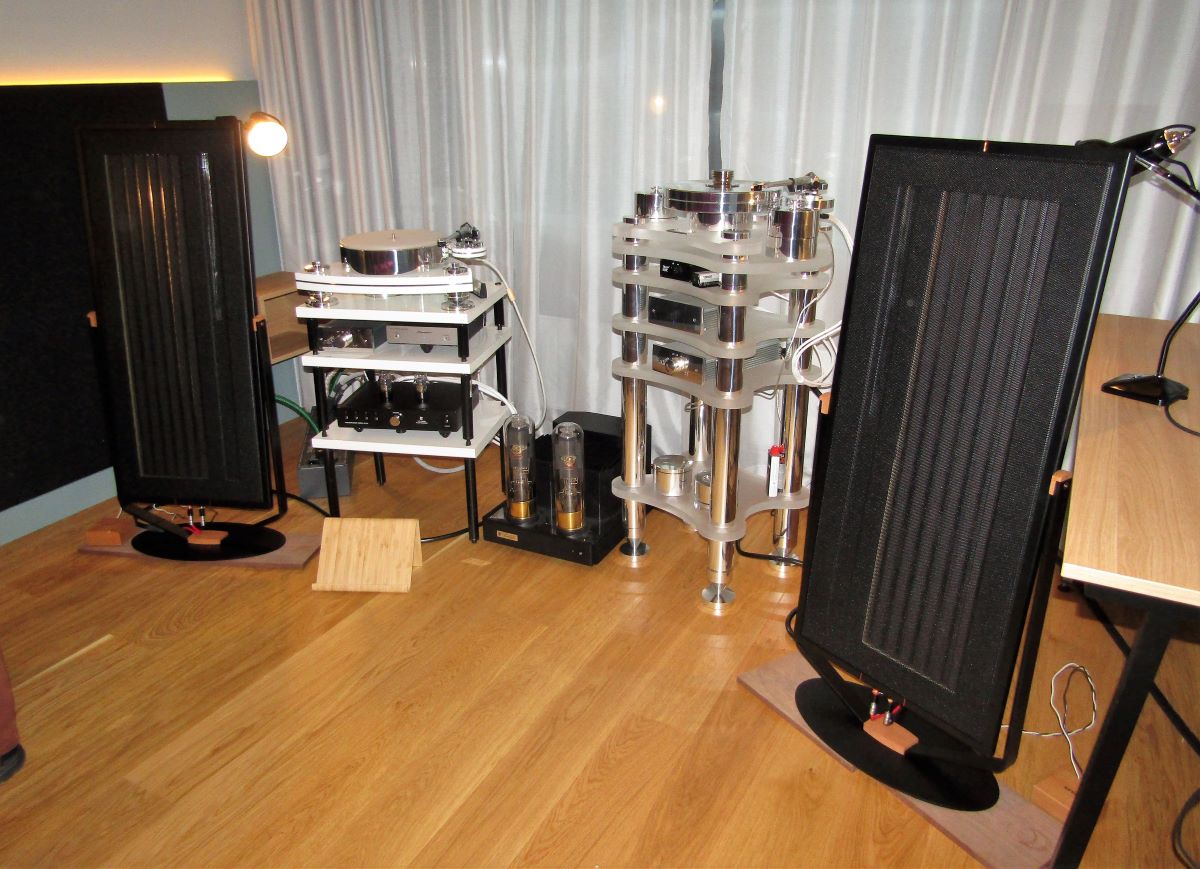
This Transrotor turntable had got another motor to become a two-motor version.
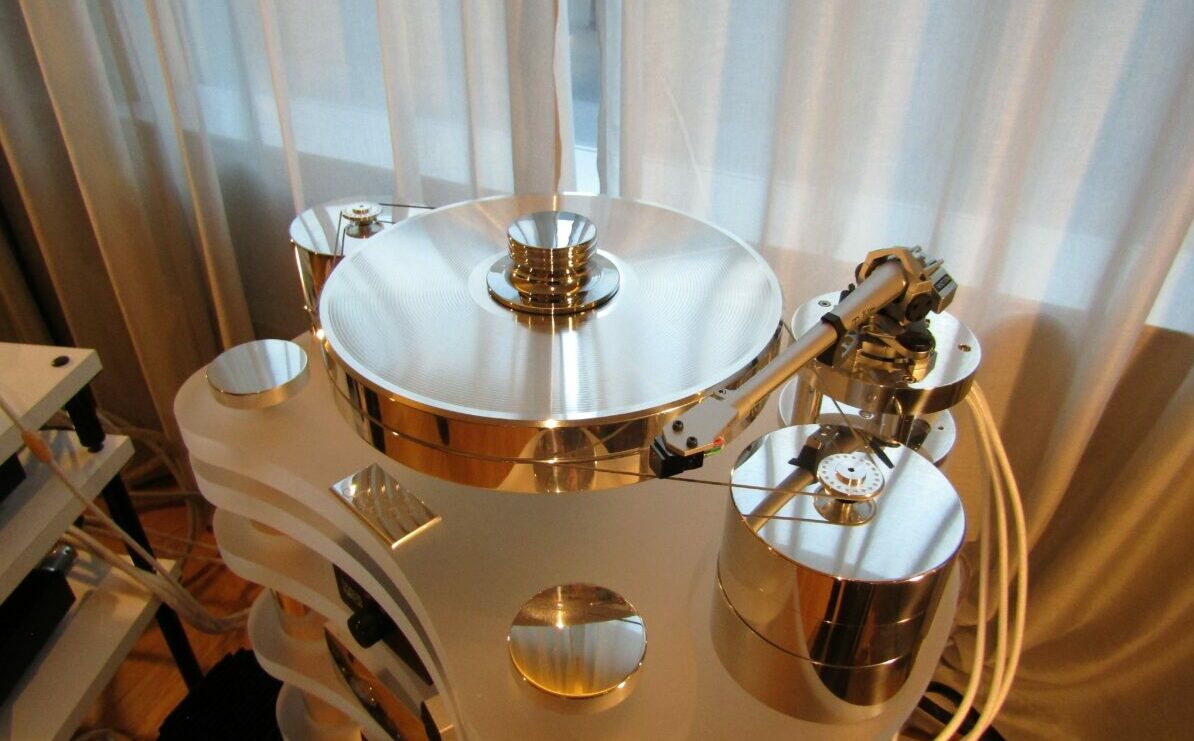
The preamp was KR Audio’s DHT-based KR45, and the power amp KR Audio’s Kronzilla with 2 x T1610 power tubes.
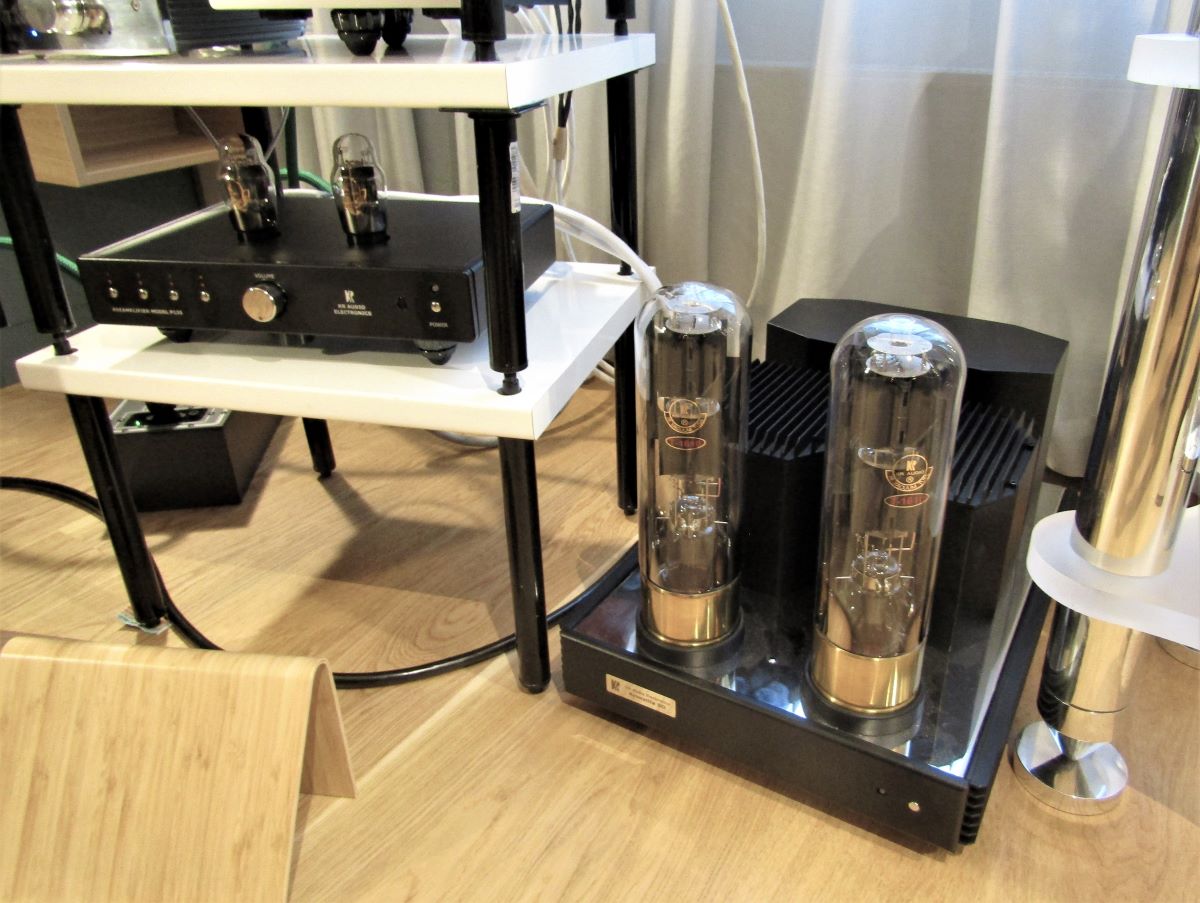
Fink team’s little KIM adapted well to Canor Audio’s AI 2.10 & PH. 2.10 combo, the source either Canor Audio CD 1.10, or Marantz TT15s1 turntable.
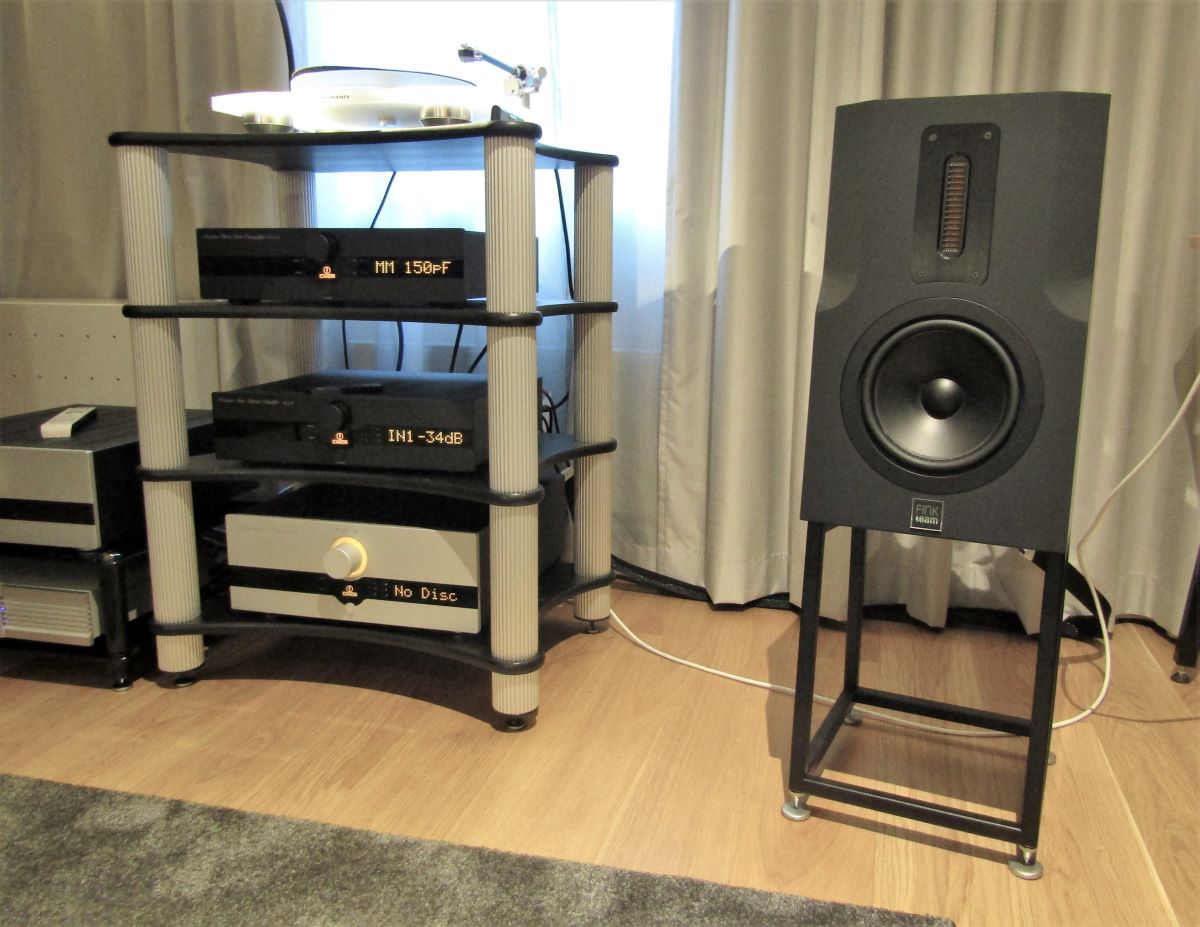
Audiolab 8300CDQ, Audiolab 8300XP and Fyne Audio’s 500-series floorstander with the company’s characteristic 7 inch concentric driver higher up.
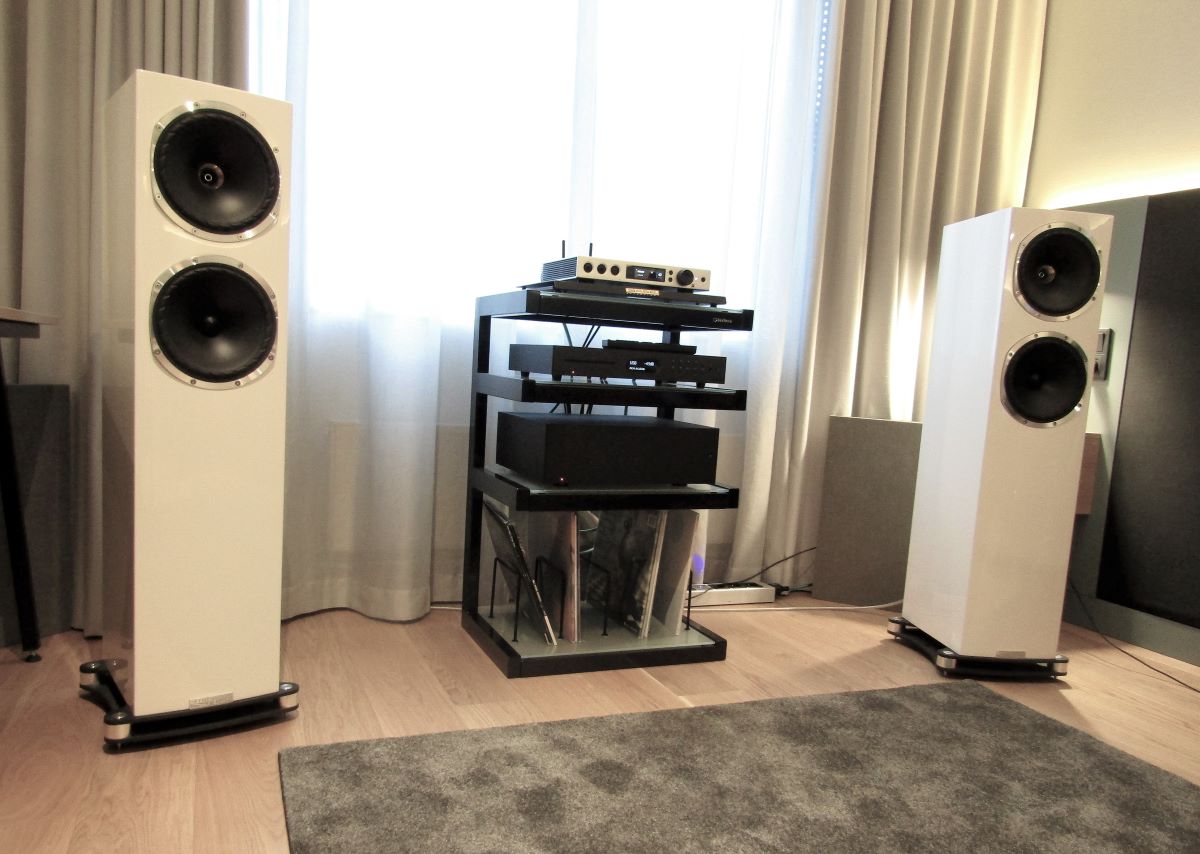
Rossofiorentino’s Elba 2 is a 4000 euro all-rounder capable of audiophile-grade listening experience, and also winner of The Absolute Sound’s Golden Ear Award for 2021. The other Golden Ear Award speaker was the 330 000 USD Wilson Audio Chronosonic XVX. The choice of amplification was between Pathos integrated, or Norma pre & power combo (see the image).
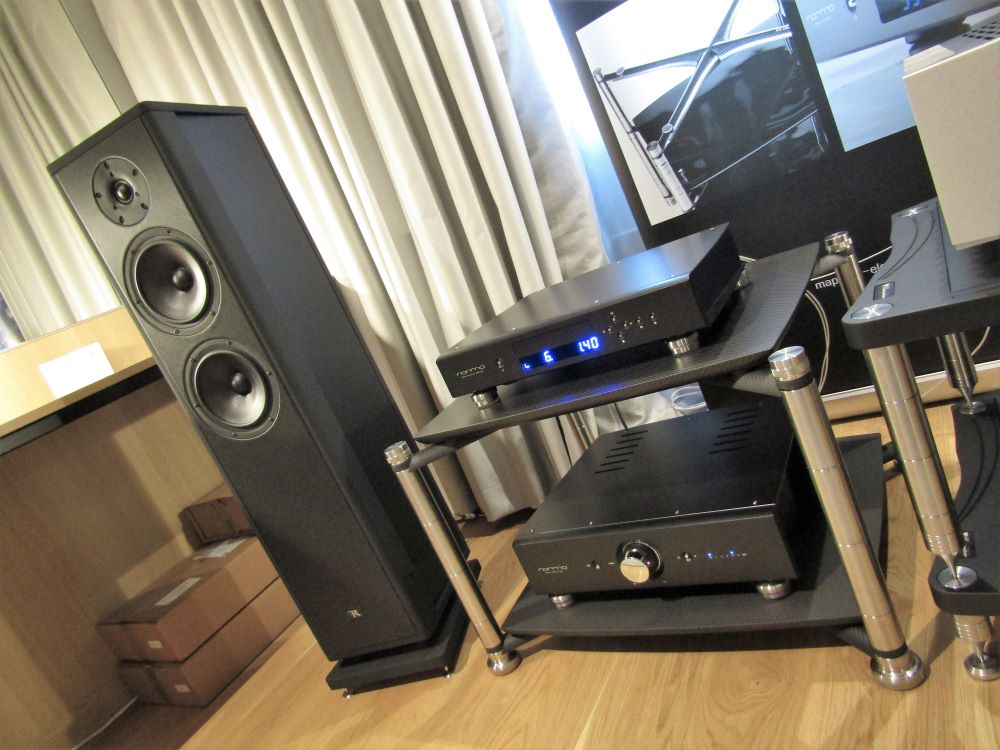
PMC’s new Twenty 5.23i and Bryston B135 integrated amp, Bryston BDP-3 network player / Bryston BDA-3 reference DAC. Music: hi-res Qobuz.
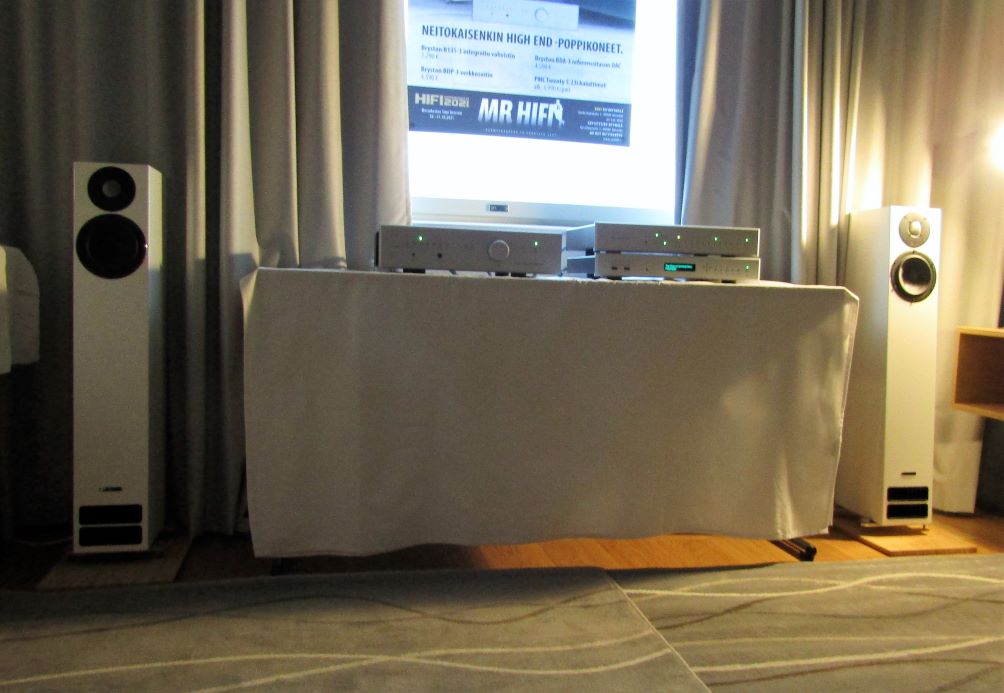
This room sounded surprisingly satisfactory given the small size, thanks to Penaudio’s Lumi 2 powered by Atoll’s SDA200 streamer/integrated amplifier.
.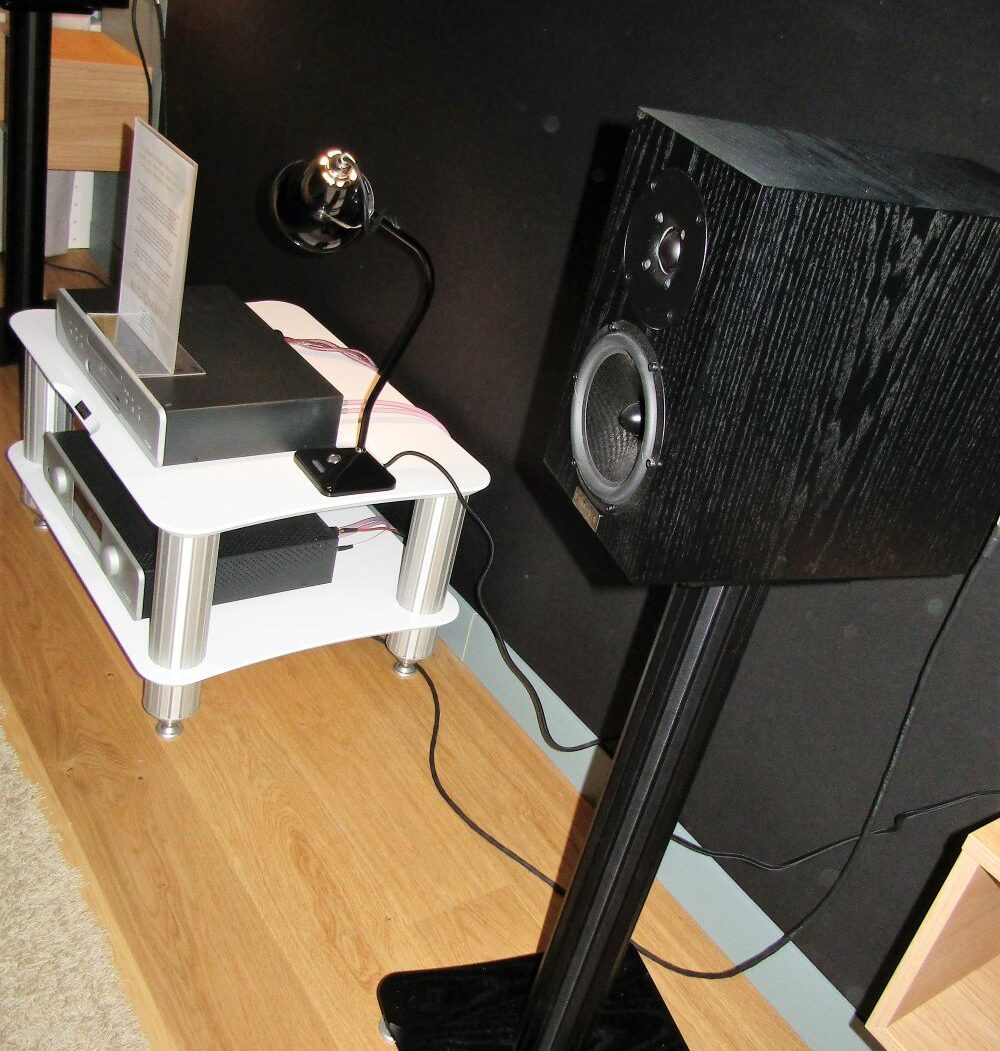
Pro-sound
The list on the left shows Billboard artists 100/weak 42/21: Drake, Olivia Rodrigo, Ed Sheeran, Doja Cat, Don Toliver, The Weekend, Justin Bieber, Lit Nas X, Taylor Swift, Dua Lipa, Luke Combs, BTS, Billie Ellis …
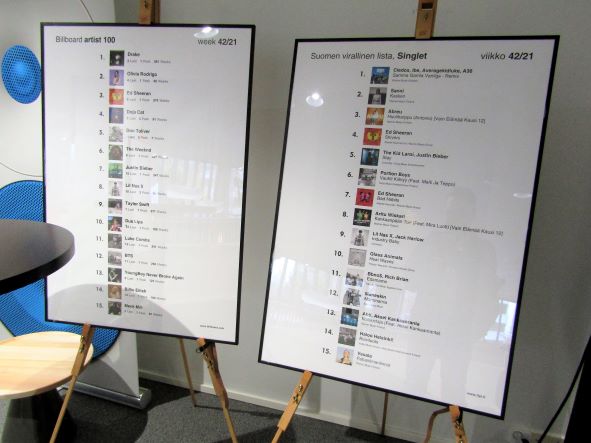
Next time you listen to their hits, bear in mind that the sound is a result of using this speaker system in mastering: the Finnish Amphion Pro Two18 top (Amp700) and active BassTwo25 bass extension. The full-range, 3-way Amphion Pro speaker system cost 20 000 euros.
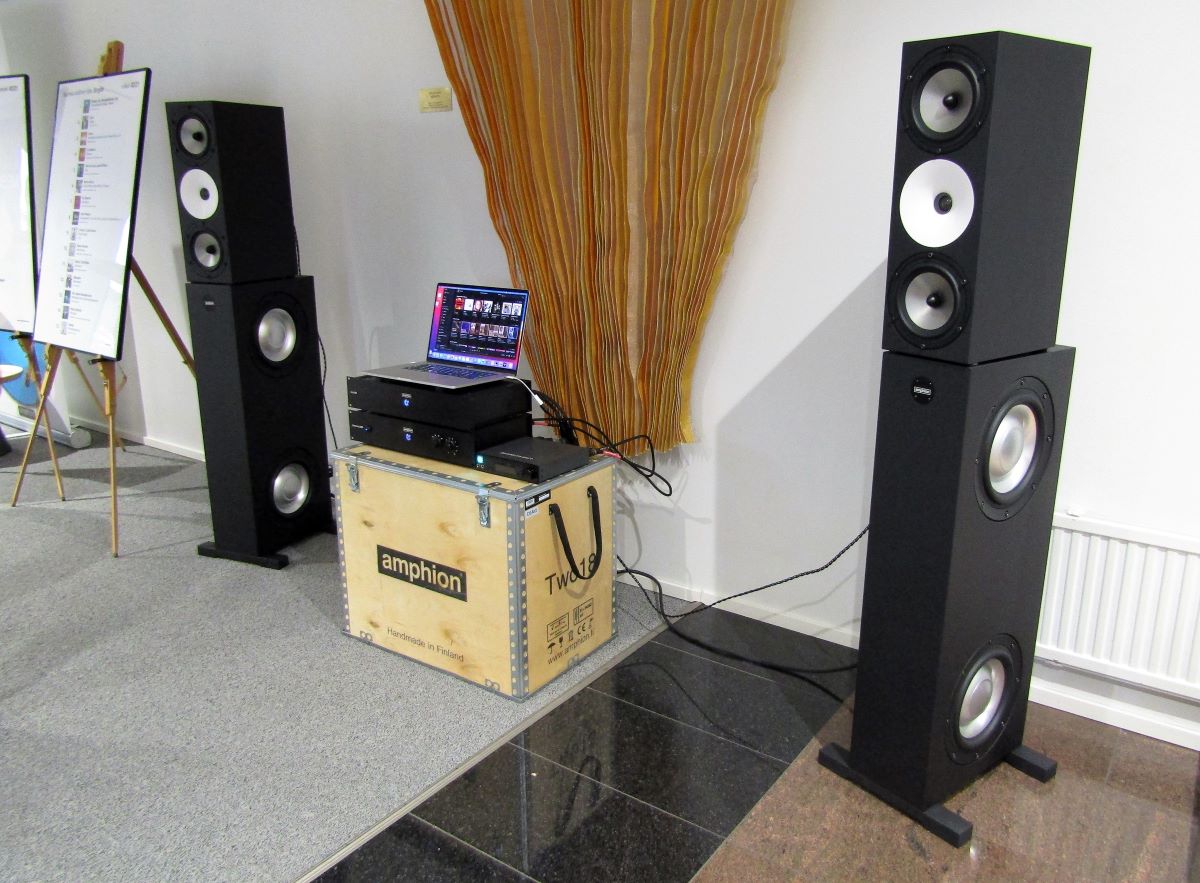
And some software.
